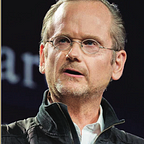Many have been saying this vocally from the start, and many more of us have been nodding silently throughout: But last night was the final straw; the donkey’s back is broken.
The great Joe Biden — certainly the most substantively consequential president since Johnson — must step aside.
How?
Here’s a plan.
- The Democratic Party should randomly select a representative sample of 1,000 Democrats, and a separate randomly selected representative sample of 1,000 Americans.
- They should pay those 2,000 citizens something substantial — maybe $2,024 each — and bring them (obviously, all expenses paid, including child/elder care expenses) to a comfortable convention center far from DC.
- At least five candidates — maybe Whitmer, Newsom, Harris, Buttigieg, Yang — should then be on stage in front of the 2,000 citizens, for a morning, 2–3 hours, as the candidates mix between presenting a case for why they should be the replacement for Joe Biden, and what their vision for America is. Facilitators, like Frank Luntz and someone else, would prompt them to engage and talk, not in 2-minute sound bites, but in a conversational, substantive, human frame.
- After lunch, the 1,000 Democrats would divide into randomly set small groups. The 1,000 Americans would do the same. Both groups would deliberate throughout the afternoon to answer the question: Which candidate would be best for America? They would then cast their (ranked choice) ballot, break until dinner, and at the end of the dinner, the results would be announced. (We have a platform that could run a parallel virtual deliberation, groups of 6–10, infinitely scalable, for anyone else who wants to engage. Maybe this is added as well.)
- The full results (including crosstab statistics) would then be presented to the Convention in Chicago in August. The Convention would decide on the candidate to draft, not based solely on the results from the deliberations, but informed by them, and by the judgment of political experts focused as well on who could win.
There are details galore, of course. But this is a structure that could guide an answer — different and better than anything else in politics today.
